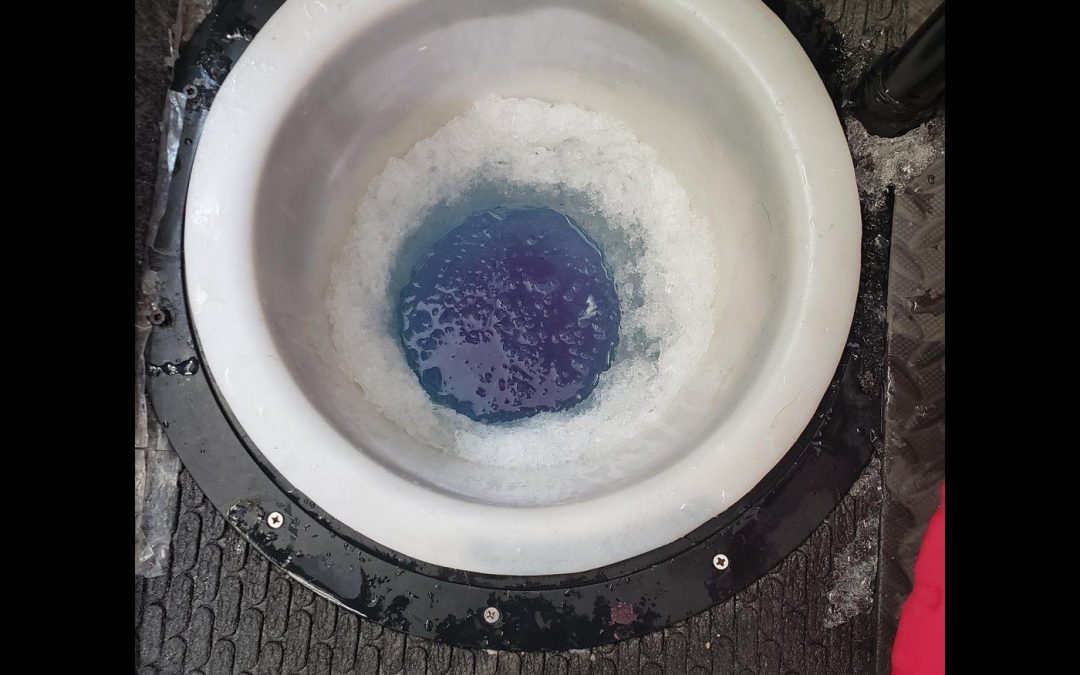Pasqua First Nation chief Todd Peigan wants to know what’s in — and on — the water at Pasqua Lake.
Ice fishers and eventually the Water Security Agency (WSA) last week found oddly discoloured, purplish blue water on top of and within the lake’s ice. The area covered measures a bit larger than 3.5 Canadian football fields — 30,000 square metres.
The area butts up against the First Nation’s eastern shoreline, formed by a triangular piece of land jutting into the water.
“(It’s) just off one of our primary beaches, we call it Asham Beach. We have people galore from our First Nation that attend down there. They camp down there annually,” Peigan said.
WSA spokesman Patrick Boyle said agency researchers have taken water samples at various depth levels from the area. They sent them to the Roy Romanow Provincial Lab for chemical and bacteriological testing earlier this week.
“It was not something you’d expect. That raised some alarms there,” Boyle said of the colour. The WSA hopes to have its testing and analysis done by “early next week and then have that information out of what we found.”
The testing process requires 48 hours; then the results need to be interpreted, he said.
The provincial water manager is also working with University of Regina water researcher Peter Leavitt. He heads up the school’s Institute of Environmental Change and Society, doing regular studies in lakes and rivers in the Qu’Appelle system.
By Thursday afternoon, he believed his team had a result based off four total samples they tested (two unaffected control samples and two discoloured samples).
“(It’s) a water-soluble pigment coloration found in blue-green algae. When you have big blooms of algae like we had late in October, it kind of busts up the cell and lets all this colour leak out … it’s like an organic dye.” The discoloured water alone is not harmful, he said.
But it’s indicative of a larger, abnormal problem: Thick, growing algae blooms surviving longer into the fall.
“Intensity and duration of these blooms is getting worse due to global warming” and added fertilizer run-off from agricultural producers, he said.
It means extra heat in the air and water, plus more phosphorus and nitrogen from run-off allow algae to live longer, slowly choking off the water systems they live in.
Peigan called the discoloured water “a major concern” for his community. He was also upset he learned of it first through social media, not the WSA.
“(Pasqua members) enjoy the swimming and water activities (at the beach). If there’s going to be an impact I need to know,” he said.
Other communities surround the lake, too, including Echo Valley Provincial Park and Standing Buffalo Dakota Nation. The lake water flows east through Fort Qu’Appelle to communities downstream like Lebret and Katepwa Beach and into the Qu’Appelle River.
“All the people that live around the lakes, but also those towns, hamlets and villages that depend (on the) the Hatfield aquifer for their water source should be concerned,” Peigan said.
(Photo submitted)
